Dacia Spring vs Suzuki Vitara – Differences & prices compared
Compare performance, boot space, consumption and price in one view.
Find out now: which car is the better choice for you – Dacia Spring or Suzuki Vitara?
The Dacia Spring (SUV) comes with a Electric engine and Automatic transmission. In comparison, the Suzuki Vitara (SUV) features a Petrol MHEV or Full Hybrid engine with Manuel or Automatic transmission.
When it comes to boot capacity, the Dacia Spring offers 308 L, while the Suzuki Vitara provides 375 L – depending on how much space you need. If you’re looking for more power, decide whether the 65 HP of the Dacia Spring or the 129 HP of the Suzuki Vitara suits your needs better.
In terms of consumption, the values are 13.20 kWh per 100 km for the Dacia Spring, and 5 L for the Suzuki Vitara.
Price-wise, the Dacia Spring starts at 14500 £, while the Suzuki Vitara is available from 23200 £. Compare all the details and find out which model fits your lifestyle best!
Dacia Spring
The Dacia Spring stands out as an affordable and environmentally friendly option in the electric vehicle market, combining practicality with a compact design ideal for urban settings. Its minimalist interior, while basic, provides all the essential features needed for a comfortable drive, reflecting its cost-effective approach. The vehicle's performance suits city driving, making it an appealing choice for those seeking an entry-level electric car.
details @ dacia-presse.de
@ dacia-presse.de
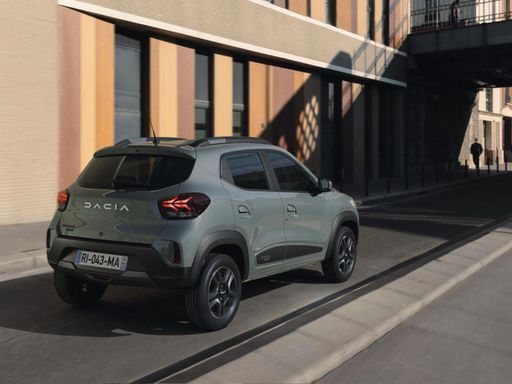 @ dacia-presse.de
@ dacia-presse.de
 @ dacia-presse.de
@ dacia-presse.de
Suzuki Vitara
The Suzuki Vitara impresses with its compact design and robust stance, making it ideal for both urban and off-road adventures. Its sleek lines and modern aesthetics ensure it stands out on the road, complemented by a comfortable and high-tech interior. The Vitara offers a smooth and engaging driving experience, combining efficiency with practicality.
details @ Suzuki
@ Suzuki
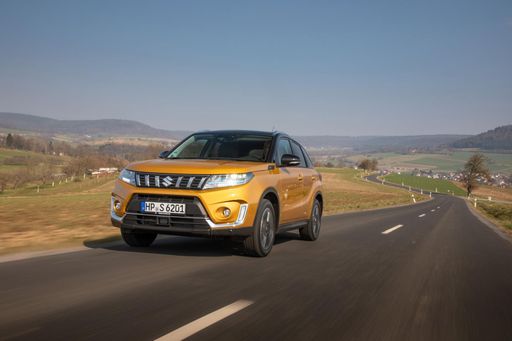 @ Suzuki
@ Suzuki
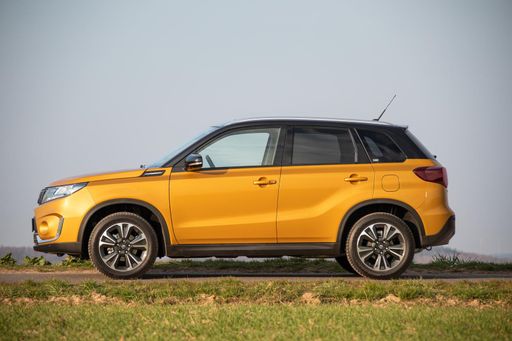 @ Suzuki
@ Suzuki
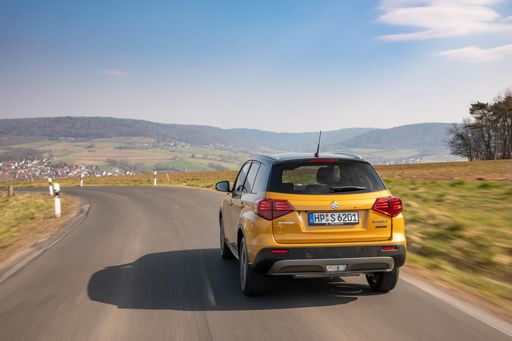 @ Suzuki
@ Suzuki
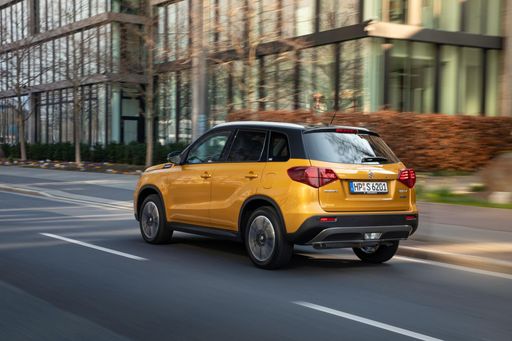 @ Suzuki
@ Suzuki
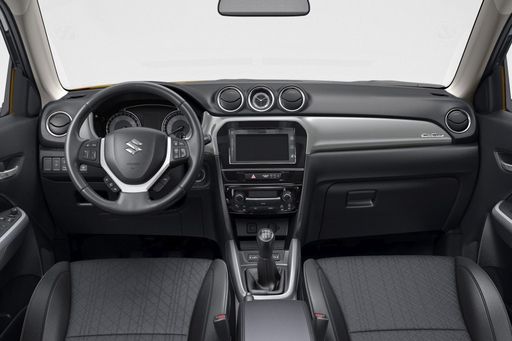 @ Suzuki
@ Suzuki

|

|
|
|
|
Costs and Consumption |
|
|---|---|
|
Price
14500 - 17100 £
|
Price
23200 - 30400 £
|
|
Consumption L/100km
-
|
Consumption L/100km
5 - 5.6 L
|
|
Consumption kWh/100km
13.2 - 14.1 kWh
|
Consumption kWh/100km
-
|
|
Electric Range
225 - 228 km
|
Electric Range
-
|
|
Battery Capacity
26.80 kWh
|
Battery Capacity
-
|
|
co2
0 g/km
|
co2
113 - 129 g/km
|
|
Fuel tank capacity
-
|
Fuel tank capacity
47 L
|
Dimensions and Body |
|
|---|---|
|
Body Type
SUV
|
Body Type
SUV
|
|
Seats
4
|
Seats
5
|
|
Doors
5
|
Doors
5
|
|
Curb weight
1013 - 1050 kg
|
Curb weight
1255 - 1395 kg
|
|
Trunk capacity
308 L
|
Trunk capacity
289 - 375 L
|
|
Length
3701 mm
|
Length
4185 mm
|
|
Width
1583 mm
|
Width
1775 mm
|
|
Height
1519 mm
|
Height
1595 mm
|
|
Payload
265 - 302 kg
|
Payload
375 - 395 kg
|
Engine and Performance |
|
|---|---|
|
Engine Type
Electric
|
Engine Type
Petrol MHEV, Full Hybrid
|
|
Transmission
Automatic
|
Transmission
Manuel, Automatic
|
|
Transmission Detail
-
|
Transmission Detail
Manual Gearbox, Automated Manual
|
|
Drive Type
Front-Wheel Drive
|
Drive Type
Front-Wheel Drive, All-Wheel Drive
|
|
Power HP
44 - 65 HP
|
Power HP
116 - 129 HP
|
|
Acceleration 0-100km/h
13.7 - 19.1 s
|
Acceleration 0-100km/h
9.5 - 12.7 s
|
|
Max Speed
125 km/h
|
Max Speed
180 - 190 km/h
|
|
Torque
113 - 125 Nm
|
Torque
235 Nm
|
|
Number of Cylinders
-
|
Number of Cylinders
4
|
|
Power kW
33 - 48 kW
|
Power kW
85 - 95 kW
|
|
Engine capacity
-
|
Engine capacity
1373 - 1462 cm3
|
General |
|
|---|---|
|
Model Year
2024
|
Model Year
2024
|
|
CO2 Efficiency Class
A
|
CO2 Efficiency Class
D, C
|
|
Brand
Dacia
|
Brand
Suzuki
|
Dacia Spring
The Revolution of Affordable Electric Mobility: The Dacia Spring
The automotive world has witnessed remarkable advancements in electric vehicles (EVs), with the Dacia Spring emerging as a noteworthy contender in the affordable segment. Combining efficiency, affordability, and practicality, the Spring offers an intriguing prospect for eco-conscious individuals and city dwellers alike.
Powertrain and Performance: A Look Under the Hood
The Dacia Spring is equipped with an electric motor that delivers between 44 to 65 PS, translating into a versatile driving experience tailored to urban landscapes. It operates on a front-wheel-drive system, ensuring a familiar and manageable handling experience.
Dacia Spring's electric engine is paired with an automatic transmission, utilising a reduction gearbox. This setup allows for smooth acceleration and a top speed of 125 km/h, ensuring that everyday driving scenarios are handled with ease.
Efficiency and Range: Eco-Friendly without Compromise
Efficiency is a cornerstone of the Dacia Spring's design, boasting an energy consumption of just 13.2 to 14.1 kWh per 100 km. When fully charged, its 26.8 kWh battery offers a respectable range of 225 to 228 km, making it ideal for daily commutes and short trips.
Furthermore, the Spring takes pride in its commendable CO2-efficiency class A, emphasising its commitment to reducing environmental footprint with a zero-emission profile.
Design and Practicality: Compact yet Comprehensive
Lying in the SUV category, the Dacia Spring is compact with dimensions of 3701 mm in length and 1583 mm in width, making it a perfect match for urban environments where space is at a premium. Despite its modest size, it provides a generous boot space of 308 litres, ensuring practicality isn’t sacrificed.
Comfort and Interior: For the Everyday Journey
The Dacia Spring comfortably seats up to four passengers. The cabin offers a minimalist yet functional design, available in multiple trim lines including Essential, Expression, and Extreme, allowing customers to choose according to their taste and requirement.
With its ergonomic layout and simplicity, the interior is crafted to enhance the driving experience by focusing on essential needs, avoiding unnecessary distractions.
Affordability and Accessibility: Breaking Barrier
The Dacia Spring stands out in the electric vehicle market due to its affordability, with prices ranging from 16,900 to 19,900 €. This ensures that environmentally friendly transportation is accessible to a broader audience.
Additionally, the Spring allows for cost-effective maintenance and operational expenses, offering monthly running costs between 570 to 599 € and cost per km between 22.8 to 24 cents, making it an economical choice in the long run.
Final Thoughts: The Future of Urban Mobility
In summary, the Dacia Spring serves as a testament to how electric vehicles can be both affordable and practical, without compromising on essential features. Whether it is for the eco-conscious urbanite or those looking for a cost-effective daily driver, the Spring is positioned as a viable solution for navigating the future of urban mobility.
Suzuki Vitara
Introduction to the Suzuki Vitara: A Blend of Style and Efficiency
The Suzuki Vitara has long been a favourite among fans of compact SUVs, offering a unique combination of style, performance, and technological innovation. The 2024 range continues to build on this strong foundation, presenting drivers with an attractive package that meets modern driving demands with impressive efficiency and capability.
Powertrain Innovations: Efficient Hybrid Options
At the heart of the Suzuki Vitara lineup lies a well-engineered selection of hybrid powertrains designed to cater to a variety of driver preferences. The vehicles are available with both mild-hybrid and full-hybrid systems, which provide a perfect balance between performance and fuel efficiency. The mild-hybrid models feature a 1.4-litre Boosterjet engine, while the full-hybrid variants are powered by a 1.5-litre Dualjet engine. The combination of these engines with hybrid technology results in an impressive fuel consumption range of 5 to 5.6 L/100km.
Performance and Driving Experience
The driving experience offered by the 2024 Suzuki Vitara is enhanced by its powertrain options, delivering between 116 and 129 PS. Depending on the model, the Vitara can achieve a top speed between 180 and 190 km/h and a 0-100 km/h acceleration time ranging from 9.5 to 12.7 seconds. The option of front-wheel or all-wheel drive (ALLGRIP) ensures versatility and adaptability across different terrains, providing superior handling and control, especially in challenging weather conditions.
Advanced Features and Comfort
The Suzuki Vitara doesn't compromise on comfort and advanced features. Depending on the chosen trim level, which includes Club, Comfort, Comfort ALLGRIP, Comfort+, and Comfort+ ALLGRIP, the Vitara is equipped with an array of modern amenities. These trim lines ensure that every driver can find a Vitara that matches their specific needs and preferences. From advanced infotainment systems to climate control options, the Vitara ensures a connected and comfortable driving experience.
Practicality Meets Style
With a body style classified as an SUV, the Suzuki Vitara combines practical space with an aesthetically pleasing design. Measuring 4185 mm in length, 1775 mm in width, and 1595 mm in height, the Vitara offers a substantial interior space with seating for five passengers and a boot capacity ranging from 289 to 375 litres. The thoughtfully designed interior and exterior ensure that practicality does not detract from its stylish appearance.
Efficiency and Cost-Effectiveness
The Suzuki Vitara's efficiency is further highlighted by its competitive CO2 emissions, ranging from 113 to 129 g/km, aligning with CO2 efficiency classes C and D. The cost of ownership is made manageable with monthly costs estimated between €858 and €971, while maintaining economical running with costs per kilometre ranging from 34.3 to 38.9 cents.
Conclusion: A Wise Choice for Today’s Drivers
Overall, the 2024 Suzuki Vitara is a compelling option for those seeking a compact SUV that delivers on performance, efficiency, and modern technology. With its blend of hybrid innovations, practicality, and a range of trim options, the Vitara is well-equipped to meet the diverse needs of contemporary motorists, offering a driving experience that is both enjoyable and sustainable.
Which drive types are available for the Dacia Spring?
Available as Front-Wheel Drive.
The prices and data displayed are estimates based on German list prices and may vary by country. This information is not legally binding.
